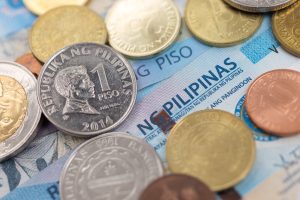Last week a plan was floated for the creation of a sovereign wealth fund in the Philippines. The first draft of the plan imagined an investment fund with initial capital of about $5 billion. The fund would be controlled by President Ferdinand Marcos Jr., and was being backed in the legislature by his family members and allies. The seed funding was to come from public entities such as the Land Bank of the Philippines and state-run pension funds. After pushback about the lack of oversight and the risk of using pension funds for this purpose, the plan has been scaled back and the pension fund provision removed. Its final form, if it indeed comes to fruition, is still being debated.
But, surprisingly, it was even proposed in the first place. Some observers have cautioned that it could become another 1MDB, the Malaysian sovereign wealth fund plagued by corruption and mismanagement. Even putting aside the rent-seeking opportunities that such state-run investment vehicles create, the Malaysian fund is not really the right example for comparison. A more instructive example is Indonesia.
Typically, sovereign wealth funds are found in countries that run trade or current account surpluses. The classic example would be smallish resource-rich countries like Norway or Qatar that take a portion of the surplus generated from their commodity exports and reinvest them via state-controlled funds. Countries that are not resource-rich but nevertheless run surpluses, like Singapore, also often have sovereign wealth funds. From a balance of payment perspective, the key is that more money is coming into the country than going out. The state captures some of this excess and reinvests it.
Malaysia, despite its mismanagement of 1MDB, is a smallish commodity exporting country that typically runs big surpluses in its current account. State-owned oil and gas giant Petronas pays billions of dollars in dividends into public coffers every year, so it is not surprising that Malaysia would funnel some of that surplus into the creation of a sovereign wealth fund. The fund became a lightning rod for corruption, but from a macroeconomic perspective we would at least expect a country like Malaysia to have a sovereign wealth fund.
Indonesia and the Philippines, on the other hand, are not typically surplus countries and in recent years have been big net debtors. The Philippines is not even a big commodity exporter and imports a lot of its energy. It is very unusual to find sovereign wealth funds in such countries, because they don’t have the surpluses needed to fund them.
Indonesia has tried to get around this by seeding its investment fund with a combination of state capital and equity from some of its more profitable state-owned companies (but notably not from any pension funds). The goal is for this seed capital to be augmented by private investment, but it remains unclear whether this will work or not. The Philippines may also be hoping to catalyze private investment in its state-controlled fund, but in both cases, it is unusual for deficit countries to structure and fund sovereign wealth funds in this way.
The Philippine proposal is in line with other major economic policy choices Marcos Jr. has made early in his administration. In the 2023 budget, for instance, the Philippines is planning to increase spending even as other countries in the region, including Indonesia, are cutting back in the face of tightening global monetary conditions. Clearly, the Marcos administration believes that boosting spending, leaning into deficits and aggressively redeploying state assets into higher-yielding investments will help the Philippines rise to the challenge in what is projected to be a difficult global economy in 2023 and beyond.
Whatever the outcome, these economic policies are highly unorthodox and carry significant risk. Given that the Philippines is not a big commodity exporter and doesn’t typically run surpluses, it is a very unlikely candidate for a sovereign wealth fund. This is probably why the plan’s backers are finding it difficult to answer basic questions about how it will be funded. It’s because countries like the Philippines don’t usually have sovereign wealth funds, and we don’t expect them to.
































